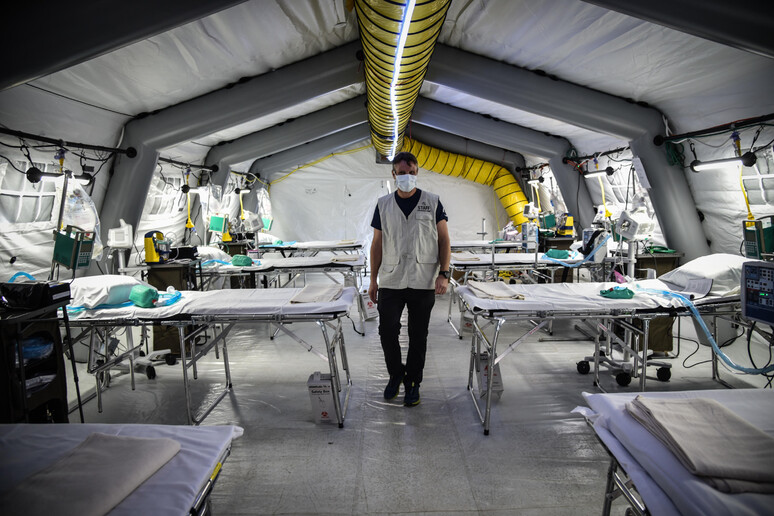The latest monitoring report on the
coronavirus situation in Italy, regarding the June 8-14 period,
drafted by the health ministry, the Higher Health Institute
(ISS) and the 'Cabina di Regia' coordination panel , said Friday
that the general picture of Sars-CoV-2 transmission and its
impact in Italy was positive, but there are some warning signs
that call for rigorous respect of the measures necessary to
reduce the risk of transmission, such as individual hygiene and
physical distancing.
Key Points.
The analysis of the data regards the June 8-14 period, which
followed the third phase of reopening of activities on June 3,
2020. Given the time that goes from exposition to the pathogen
and the development of symptoms and the diagnosis and subsequent
notification, it is likely that the cases reported this week
regard infections that took place 2-3 weeks before, that is
during the second phase of reopenings (between May 18 and June
1, 2020). Some of the cases identified via screening, however,
could date back to a previous period.
On the whole, the general picture of Sars-CoV-2 transmission and
its impact in Italy remains at a low level of criticality, with
a culmulative incidence of the last 14 days (period June 8-June
14) of 6.03 per 100,000 inhabitants.
Nevertheless, a slight increase in cases was observed at the
national level with respect to the previous week, found both in
the surveillance flow coordinated by the health ministry and
published on the site of the Civil Protection Department and in
the surveillance flow coordinated by the Higher Health
Institute.
The absence of signals of health services being overwhelmed
continued.
In some regions a high number of cases continues to be reported.
This calls for caution as it denotes that the circulation of the
SARS-CoV-2 is still at a significant level in some parts of the
country.
New cases of infection were diagnosed throughout the peninsular
during the monitoring week, with an increase in cases with
respect to the previous monitoring week in several
regions/autonomous provinces.
The Rt infection index remained below 1 nationwide and in almost
all of Italy's regions and autonomous provinces.
Although this can partially be attributed to intense screening
and the investigation of cases, with the identification and
monitoring of close contracts, these signals must not be
underestimated as they show that the COVID-19 epidemic is not
over and that the epidemiological situation is extremely fluid.
It is essential to stay focused and continue to strengthen the
"testing-tracing-tracking" activities in order to be able to
quickly identify all the potential transmission hotspots and
keep control of the epidemic.
It is also fundamentally important to keep high the general
population's awareness of the fluidity of the epidemiological
situation and the importance of rigorous respect of the measures
necessary to reduce the risk of transmission, such as individual
hygiene and physical distancing.
Conclusions.
Italy's lockdown measures made it effectively possible to
control SARS-CoV-2 infection across the national territory,
albeit in a situation of persistent widespread transmission of
the virus, with widely different incidences among the 21 Italian
regions/autonomous provinces.
The situation described in the report, prevalently regarding the
second phase of transition, is positive on the whole, but there
are some warning signs of transmission.
The report describes an epidemiological situation that is still
fluid and calls for rigorous respect of the measures required to
reduce the risk of transmission, such as individual hygiene and
physical distancing.
It is also necessary to maintain a high level of resilience of
the regional services in order to facilitate awareness among the
population, actively seek out and diagnose potential cases,
isolate confirmed cases and put close contacts into quarantine.
These actions are fundamentally important in order to control
transmission and rapidly identity and address eventual new
outbreaks of the epidemic.
ALL RIGHTS RESERVED © Copyright ANSA











